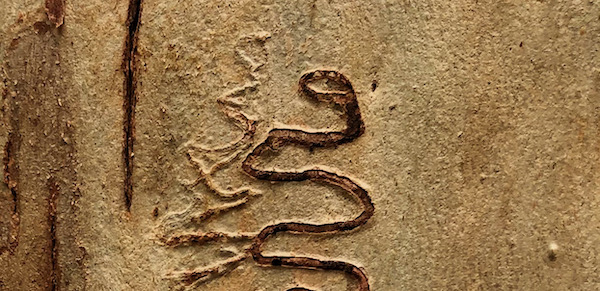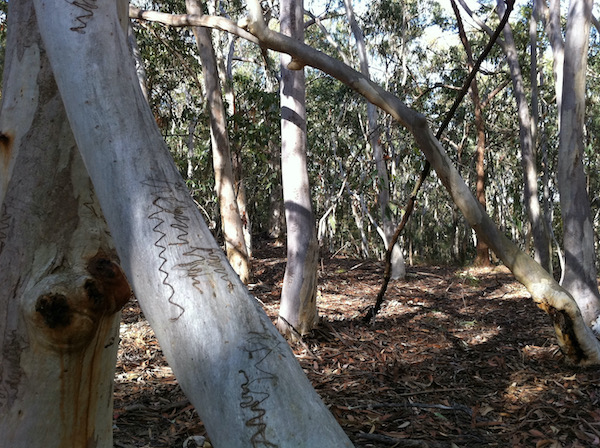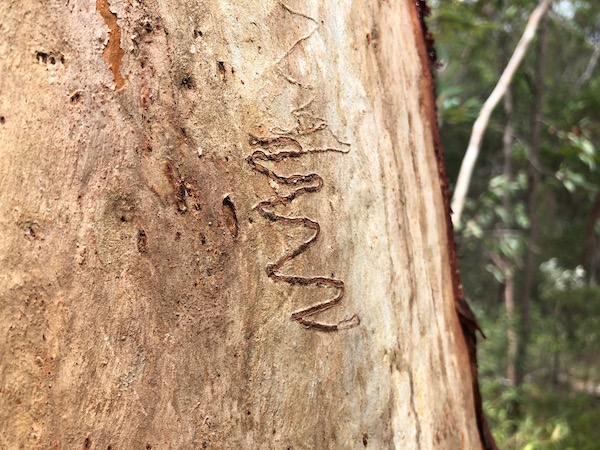The Seven Hills Reserve has a few Scribbly Gum (Eucalyptus racemosa) trees that stand out at this time of year with their smooth, pale yellow trunks. I was a bemused since some of these trees in the reserve don’t have obvious, or very many, scribbles on them. So I took a look at this lone tree which is growing down from the track on the southern slopes of Ridge Peak.

The scribbles are made by the caterpillar of the Ogmograptis racemosa moth. There is a fascinating story of their discovery by the CSIRO. The really interesting observation is the little loop at the top of the scribble. This is where the caterpillar which has been boring under the tree’s surface circles around 360° and then eats its way back along the tunnel it has already made. Because the tree heals the wound with new growth, the caterpillar finds new food. When it reaches the end (i.e. where it originally began boring) it emerges, fully-fed and ready to start its new life, first as a pupa, and finally as a moth.

In other nearby forests (like this one in Belmont Bushland Reserve), there are groves of many E. racemosa together rather than apart. Trees in these groves tend to have more scribbles on their trunks. Perhaps these observations are related: a greater number of grouped trees support a higher population of Ogmograptis racemosa moths?
